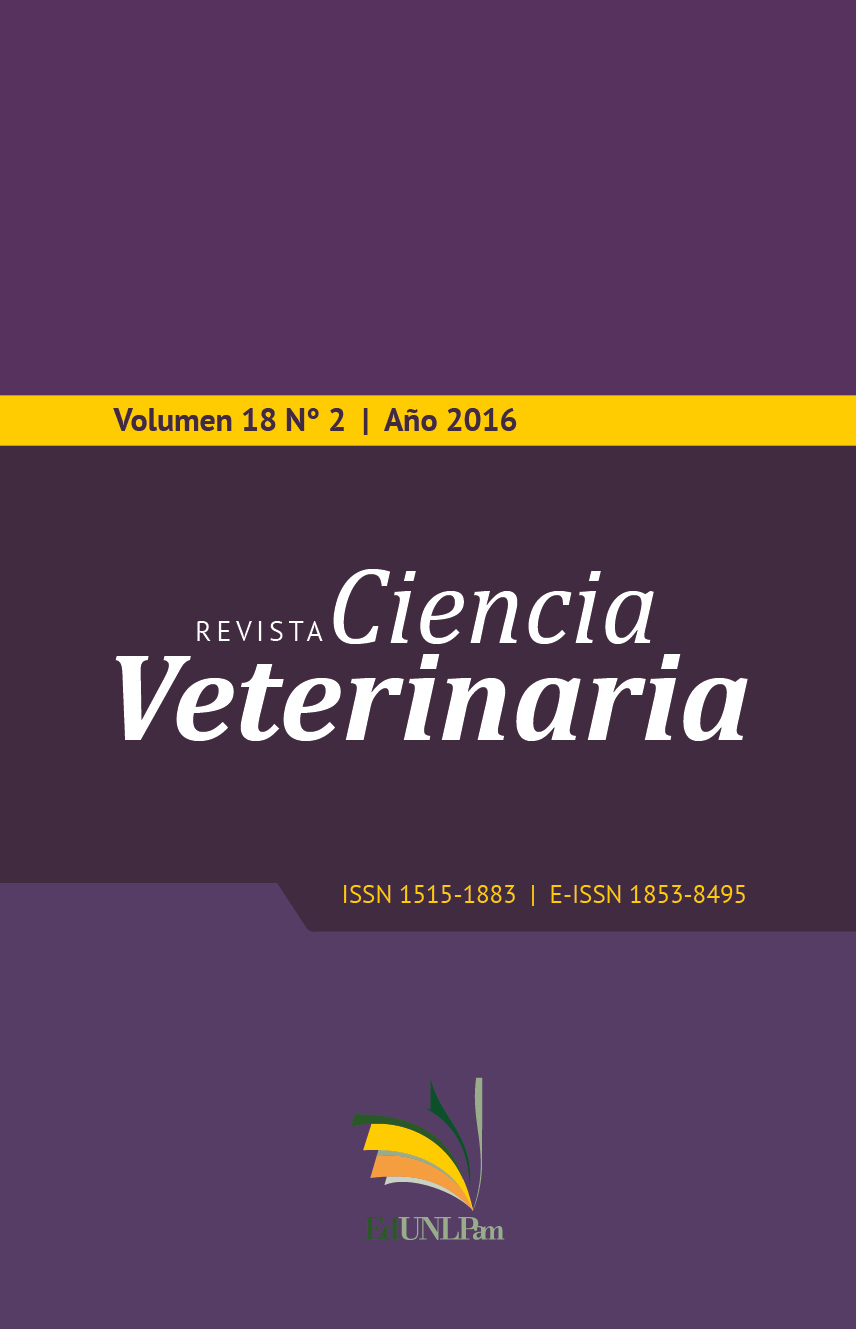Parasitic myelopathy by Gurltia Paralysans
DOI:
https://doi.org/10.19137/cienvet-20161825Keywords:
ataxia, myelopathy, paraparesis, catsAbstract
Parasitic myelopathy by Gurltia paralysans is, apparently,
a South American disease, but little is known about it. It is
a medullary disorder caused by a parasite that in its adult
form, it is lodged in the spinal veins of cats causing a hemorrhage
by suffusion that compromises the spinal cord in a
variable way.
It has been proposed that domestic cats are accidental
guests, and that small wild cats such as the huiña cat (Felis
guigna) in Chile, or the cat of the pampas (Felis geoffroyi)
in Brazil and Argentina, are the definitive hosts, housing
the parasite in the lung. Cats are likely infected by ingesting
small lizards. The affected animals present typical signs
of chronic myelopathy, with varying degrees of affection,
from ataxia to severe paraparesis, depending on the time
of evolution. The main lesions are between T10 and L2,
with projection up to L5-L6. The affected cats always live
in rural areas, and this parasitosis has not been diagnosed
in any urban area. The diagnosis is based on the clinical
history of slowly progressive chronic myelopathy and the
habitat of sick cats. Recently a PCR technique has been developed
that allows the identification of parasitic DNA in
the CSF of the affected cats. The treatment is based on the
application of ivermectin, and it is most effective if it is implemented
early.
Downloads
Downloads
Published
How to Cite
Issue
Section
License
Al momento de enviar sus contribuciones, los colaboradores deberán declarar , de manera fehaciente, que poseen el permiso del archivo o repositorio donde se obtuvieron los documentos que se anexan al trabajo, cualquiera sea su formato (manuscritos inéditos, imágenes, archivos audiovisuales, etc.), permiso que los autoriza a publicarlos y reproducirlos, liberando a la revista y sus editores de toda responsabilidad o reclamo de terceros , los autores deben adherir a la licencia Creative Commons denominada “Atribución - No Comercial CC BY-NC-SA”, mediante la cual el autor permite copiar, reproducir, distribuir, comunicar públicamente la obra y generar obras derivadas, siempre y cuando se cite y reconozca al autor original. No se permite, sin embargo, utilizar la obra con fines comerciales.








.jpg)

4.png)


7.png)



